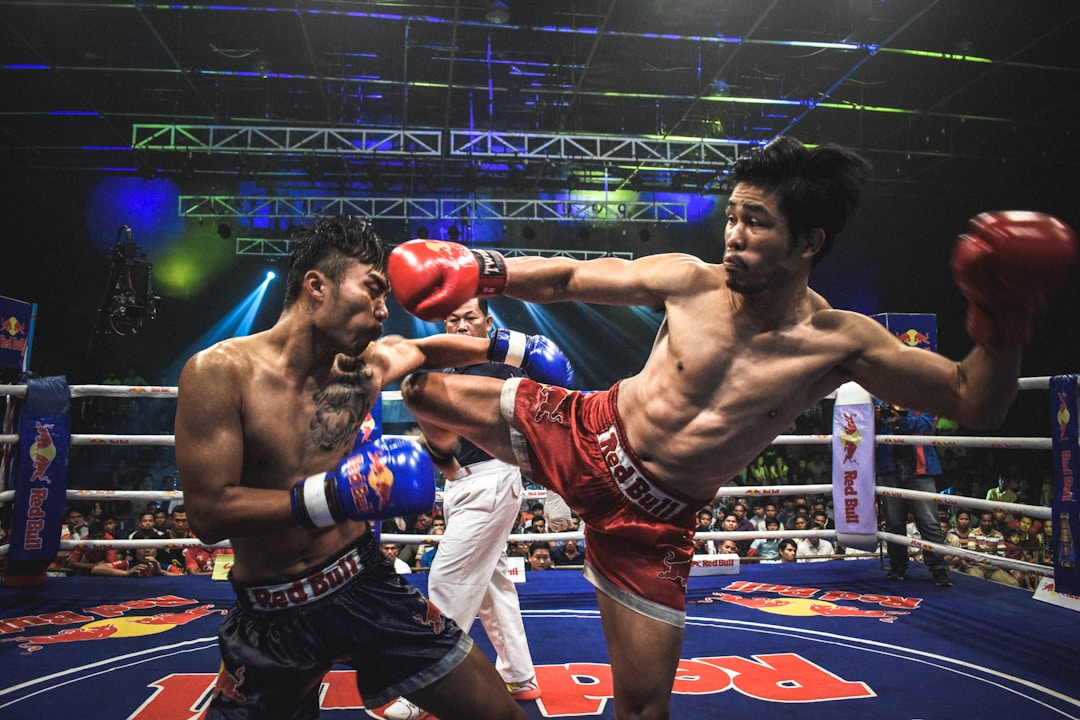As an aggressive yet graceful martial art form, Muay Thai offers much more than just another style of fighting. Born on the battlefield, Muay Thai is now a national sporting event in Thailand and is practiced by many worldwide for its holistic benefits. for those keen to learn about this ancient yet ever-evolving martial art, understanding the techniques and discipline required is the key to mastery. In this article, we take you through the various facets of this impressive martial art form.
Unlocking the Ancient Art of Muay Thai
Muay Thai originated in the 16th century as a form of self-defense using the entire body as a weapon. Its principles revolve around utilizing the body’s natural strengths to land fatal strikes on the enemy. Referred to as the “Art of Eight Limbs,” Muay Thai teaches the use of fists, elbows, knees, and shins in combat.
Boasting a rich history, this ancient martial art form was used by Siamese soldiers during wartime. Today, it is a renowned combat sport attracting enthusiasts globally. For those looking to kickstart their journey in Muay Thai, places like the Muay Thai San Diego gym offer comprehensive training programs.
While highly dramatic and aggressive in its portrayal, Muay Thai harbors technique and strategy beneath its violent exterior. Executing effective strikes while blocking the opponent’s attacks are prime objectives in this martial art form.
Styles in Muay Thai vary depending on the emphasis placed on offensive or defensive techniques, hard or soft strikes, and physical conditioning. The broad spectrum of techniques allows practitioners to adopt the style they are most comfortable with.
Decoding the Impeccable Techniques in Muay Thai Fighting Style

Muay Thai techniques stem from the dexterity of human body movements. They are designed to infuse strength and speed to make each strike deadly. Punching techniques, borrowed from Western Boxing, include jab, cross, hook, and uppercut.
Elbow strikes form an important part of the Muay Thai arsenal. They are close-range strikes involving a wide array of horizontal, diagonal, uppercut, and downward strikes. The sharpness of the elbow and close proximity delivery often result in knockout blows.
Kicking techniques mainly involve roundhouse, push, and axe kicks. The devastating power of a well-executed Muay Thai kick is infamous and can substantially weaken the opponent. Clinching, or the art of executing strikes from a grappling position, is another distinct aspect of Muay Thai.
Defense techniques involve checking an opponent’s incoming strikes with shins, forearms, or gloves, evading strikes, or disallowing the attacker to perform their desired movement. Mastery of these techniques is necessary to defend oneself efficiently during combat.
Harnessing the Power of Your Body for Muay Thai
Muay Thai is perceived as a strength-oriented martial art form. However, the strength required is not just physical. Mental toughness, endurance, and agility are equally important to outperform the opponent.
Physical strength is vital for executing impactful strikes and enduring the opponent’s responses. Regular strength training and conditioning exercises form core aspects of Muay Thai training.
Agility helps in executing strikes accurately and fast. It also enables quick evasion and effective blocking of an opponent’s moves. Practitioners often use agility drills and flexibility exercises to enhance this skill.
Mental toughness is fundamental for enduring rigorous training and maintaining focus during combat. Meditation, visualization, and mental conditioning techniques help to strengthen this facet.
The Essential Role of Discipline in Muay Thai Training

Effective training in Muay Thai requires a high level of discipline and commitment. Adherence to training schedules, following strict dietary habits, and constant efforts to master all aspects of the art are crucial to success.
Discipline also concerns respect for the tradition, instructors, and fellow practitioners. From learning to perform the traditional pre-fight dance ‘Wai Khru’ to respecting one’s opponents and accepting defeat, discipline is deeply ingrained in the ethos of Muay Thai.
The rigorous training necessitates taking care of one’s body for recovery and preparedness for the next day. Maintaining adequate hydration, sufficient sleep, and following a balanced diet are considered parts of the discipline.
Discipline is not just imposed from the outside; it must be embraced willingly for effective learning. It nurtures mental strength and resilience, core aspects of a successful Muay Thai practitioner.
Overall, Muay Thai offers a unique blend of physical fitness, mental development, and self-defense. It is a rewarding pursuit for those willing to embrace the discipline and rigor the art demands.












